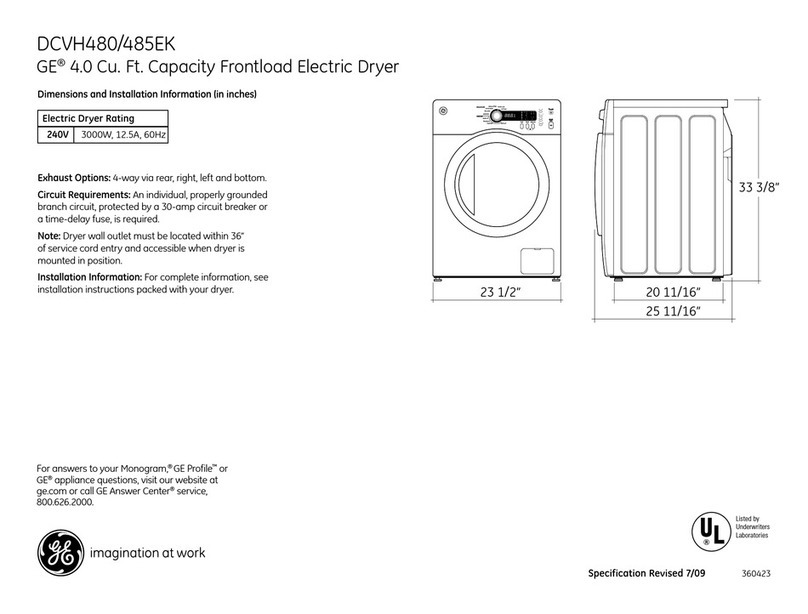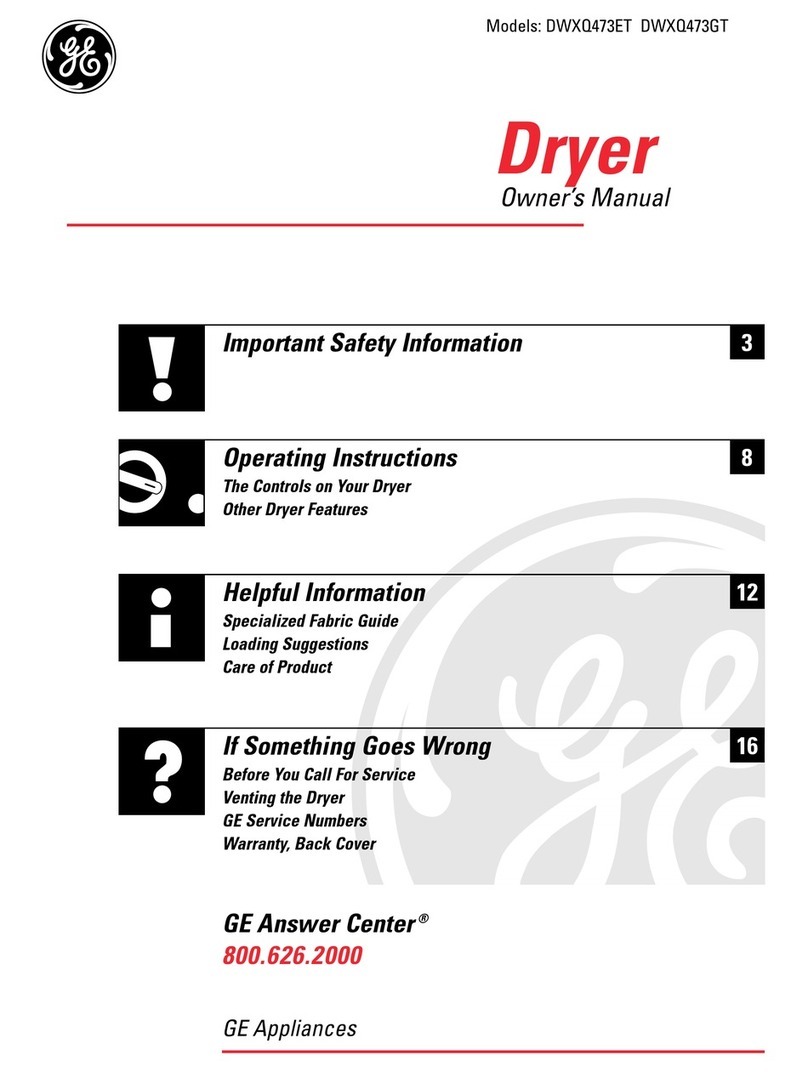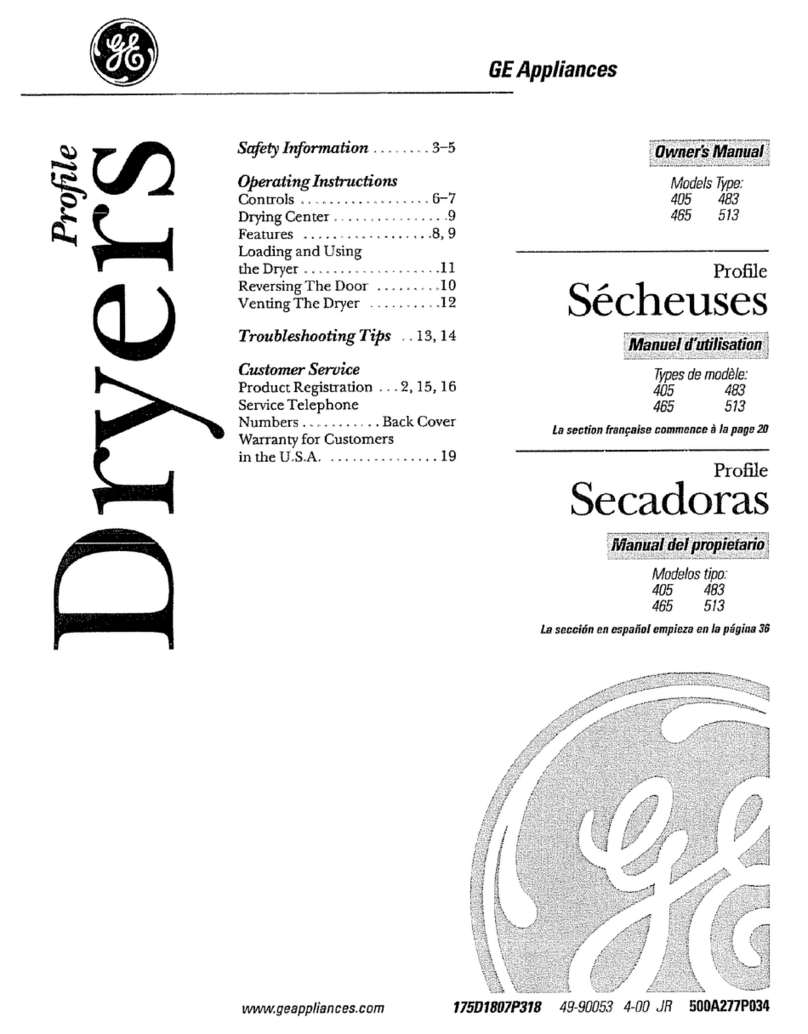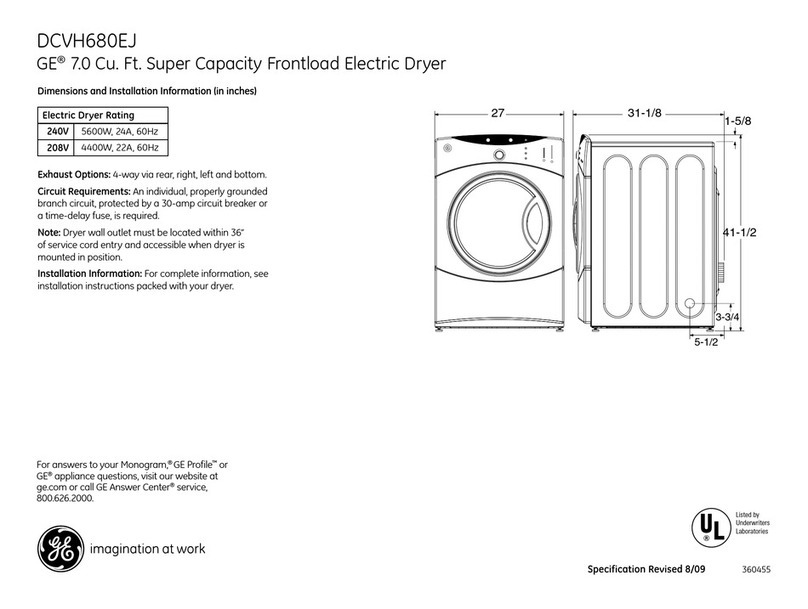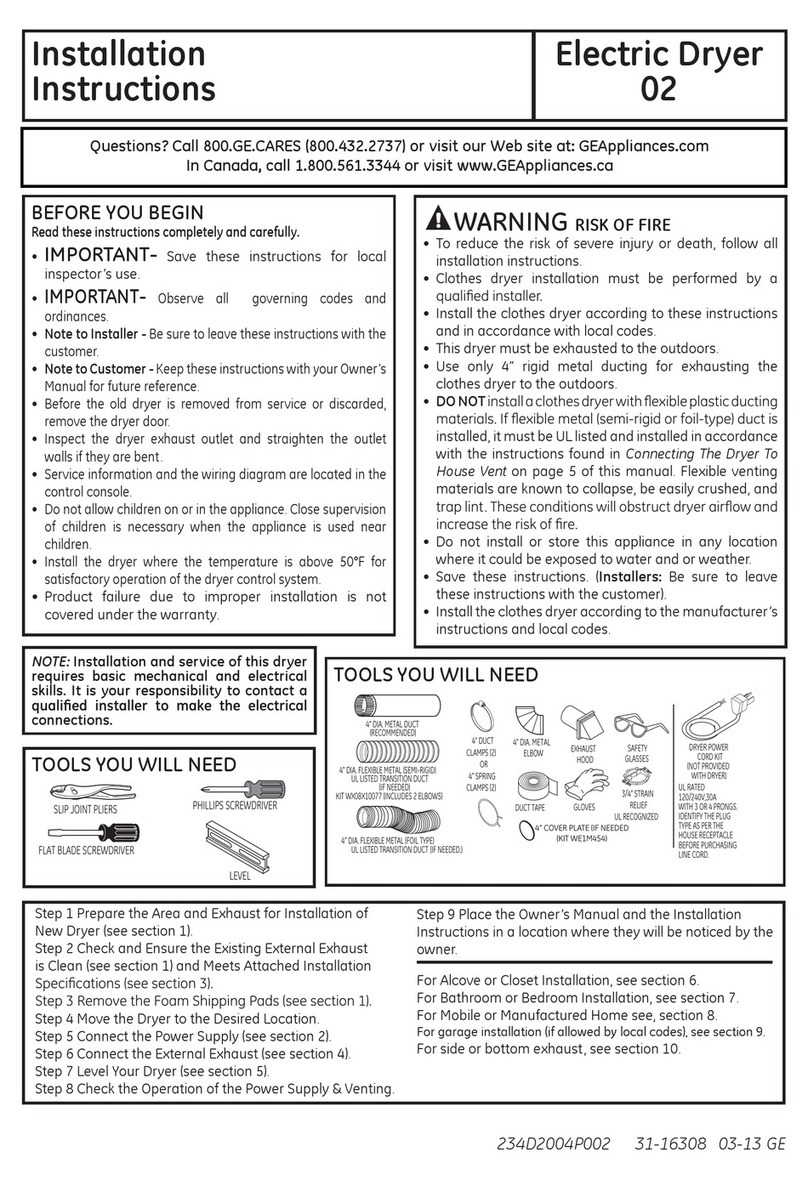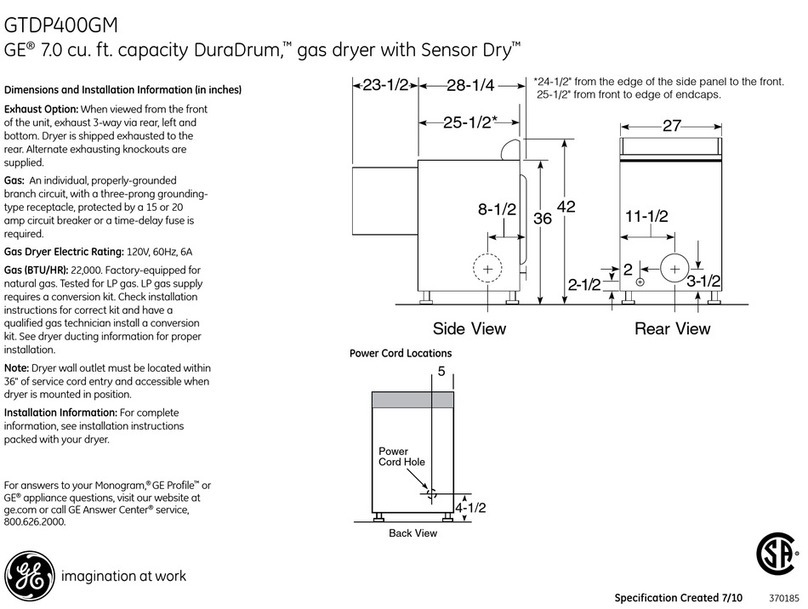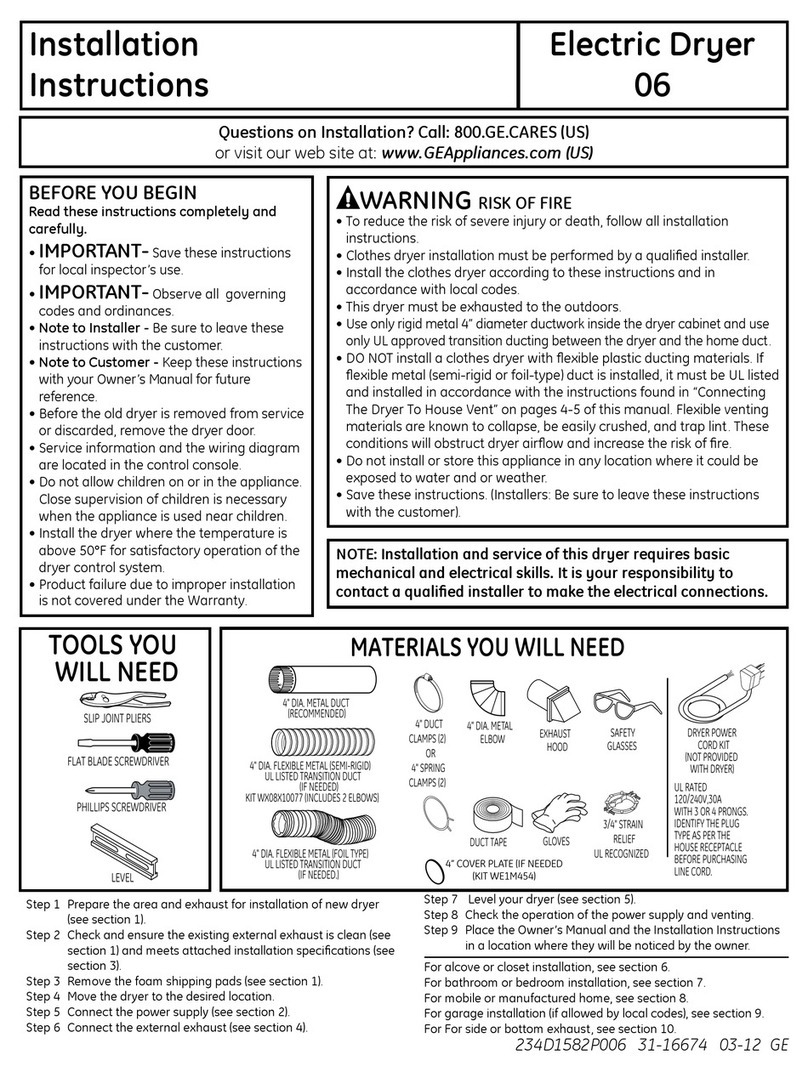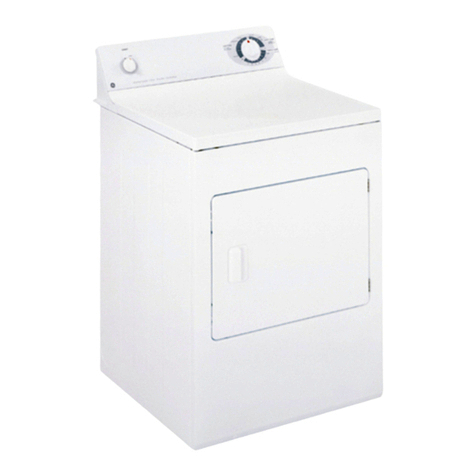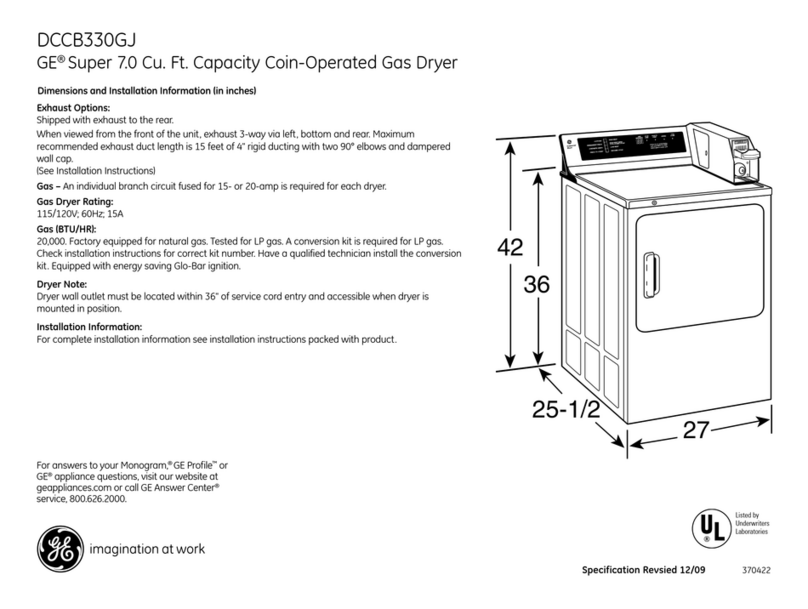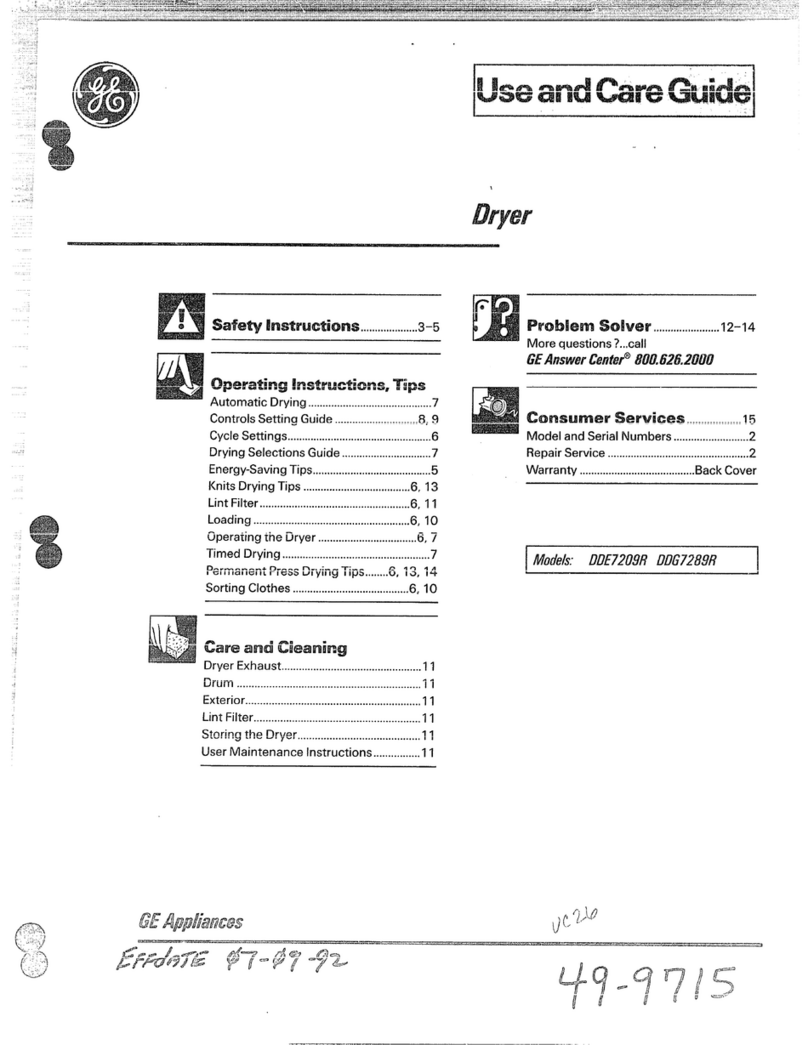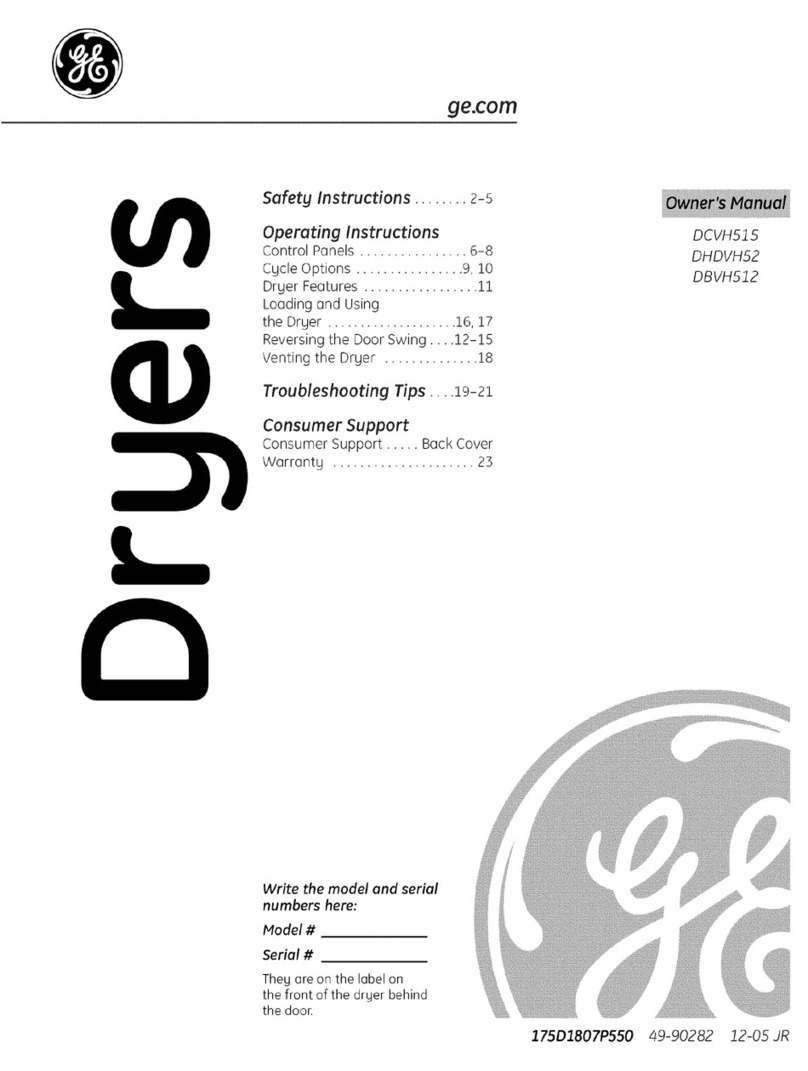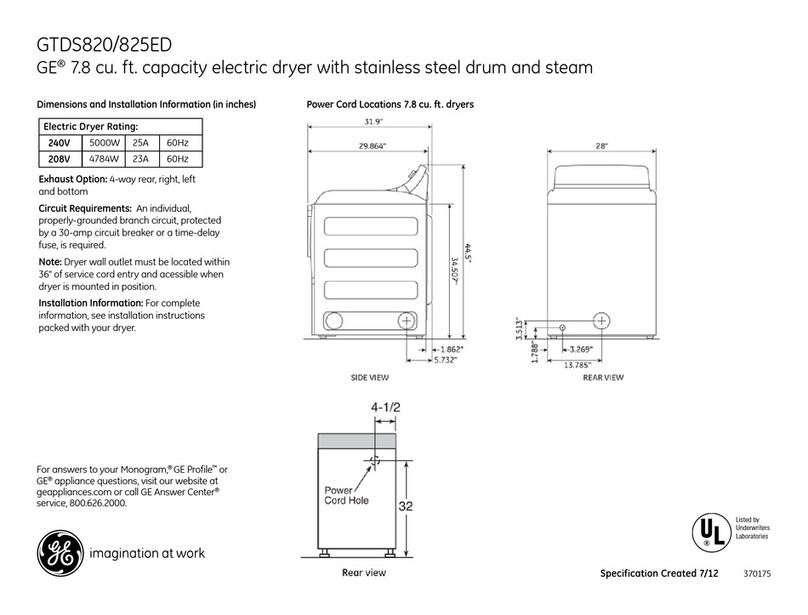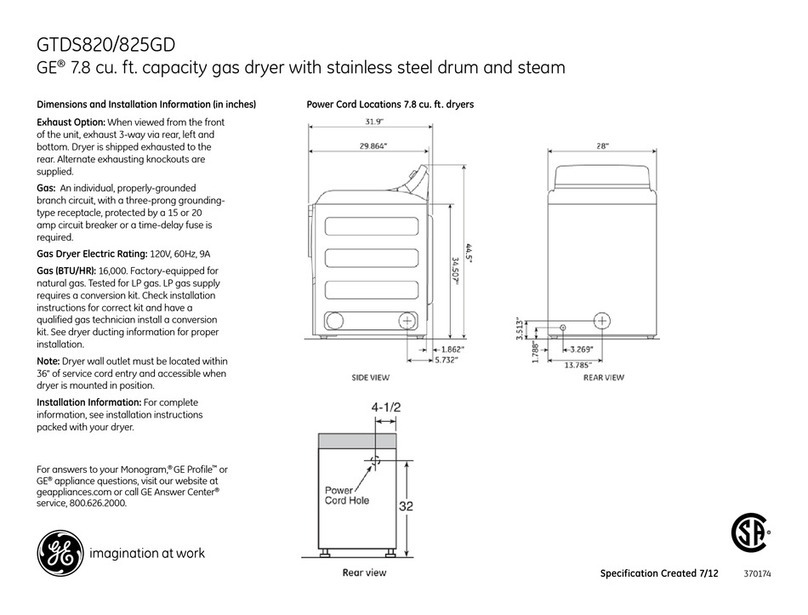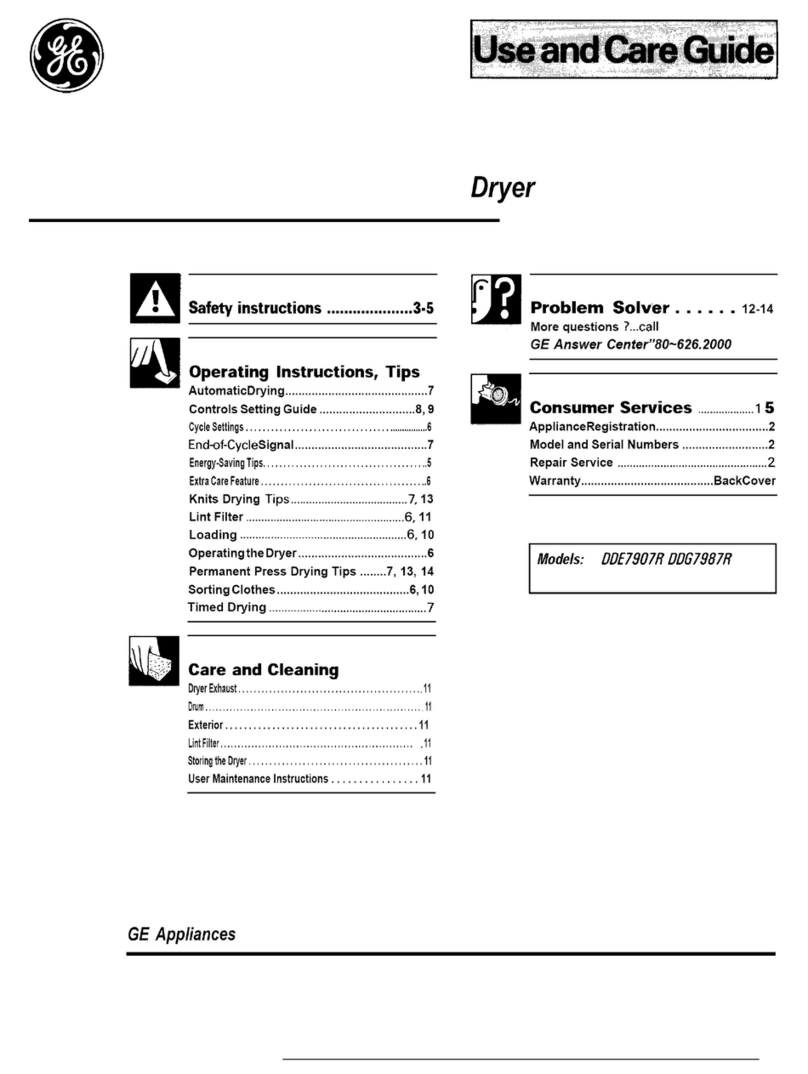
49-3000304 Rev 1 3
IMPORTANT SAFETY INFORMATION.
READ ALL INSTRUCTIONS BEFORE USING THE APPLIANCE
SAFETY INFORMATION
WARNING
To reduce the risk of fire, explosion, electric shock, or injury to persons when using your
appliance, follow basic precautions, including the following:
• Read all instructions before using the appliance.
•
DO NOT dry articles that have been previously cleaned in, washed in, soaked in, or spotted with gasoline,
dry-cleaning solvents, or other flammable or explosive substances, as they give off vapors that could ignite
or explode.
• DO NOT place items exposed to cooking oils in your dryer. Items contaminated with cooking oils may
contribute to a chemical reaction that could cause a load to catch fire. To reduce the risk of fire due to
contaminated loads, the final part of the tumble dryer cycle occurs without heat (cool down period). Avoid
stopping a tumble dryer before the end of the drying cycle unless all items are quickly removed and spread
out so that the heat is dissipated.
• DO NOT allow children to play on or in this appliance. Close supervision of children is necessary when this
appliance is used near children.
• Before the appliance is removed from service or discarded, remove the door to the drying compartment.
• DO NOT reach into the appliance if the drum is moving.
• DO NOT install or store this appliance where it will be exposed to the weather.
• DO NOT tamper with controls.
• DO NOT climb or stand on this unit.
• DO NOT repair or replace any part of this appliance or attempt any servicing unless specifically recommended
in the user-maintenance instructions or in published user-repair instructions that you understand and have the
skills to carry out.
• Follow all fabric care instructions and warnings to prevent melting of garments or damage to the appliance.
• DO NOT use fabric softeners or products to eliminate static unless recommended by the manufacturer of the
fabric softener or product.
•DO NOT dry articles containing foam rubber or similarly textured rubber-like materials.
• Clean lint screen before or after each load.
• DO NOT operate the dryer without the lint filter in place.
• DO NOT store combustible materials, gasoline or other flammable liquids near the dryer. Keep area around
the exhaust opening and adjacent surrounding areas free from the accumulation of lint, dust and dirt.
• The interior of the appliance and exhaust duct should be cleaned periodically by qualified service personnel.
• Unplug the appliance or turn off the circuit breaker before servicing. Pressing the Start/Pause ( ) pad
DOES NOT disconnect power.
• DO NOT operate this appliance if it is damaged, malfunctioning, partially disassembled, or has missing or
broken parts, including a damaged cord or plug.
• DO NOT spray any type of aerosol into, on or near dryer at any time. DO NOT use any type of spray cleaner
when cleaning dryer interior. Hazardous fumes or electrical shock could occur.
• See “ELECTRICAL CONNECTION” located in the Installation Instructions for grounding instructions.
READ AND SAVE THESE INSTRUCTIONS
Proper Disposal of your Appliance
Ŷ
Dispose of or recycle your appliance in accordance with Federal and Local Regulations. Contact your local
authorities for the environmentally safe disposal or recycling of your appliance.
Ŷ
Consider recycling options for your appliance packaging material.






